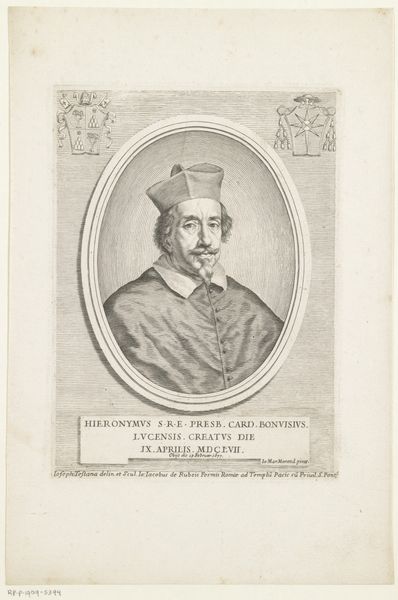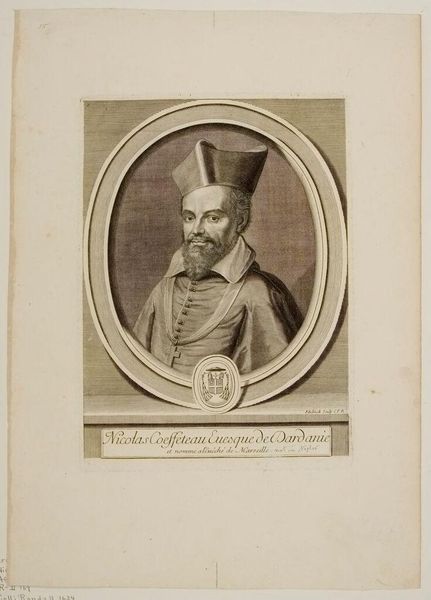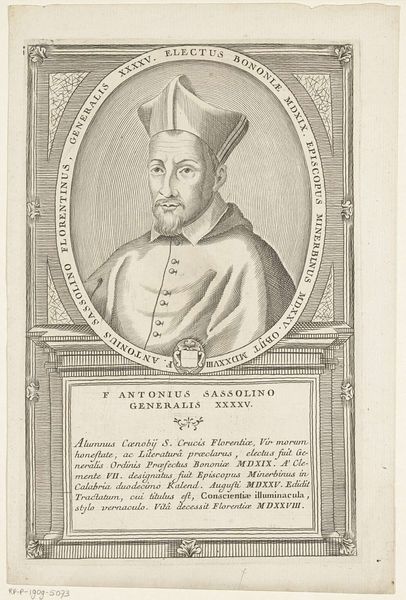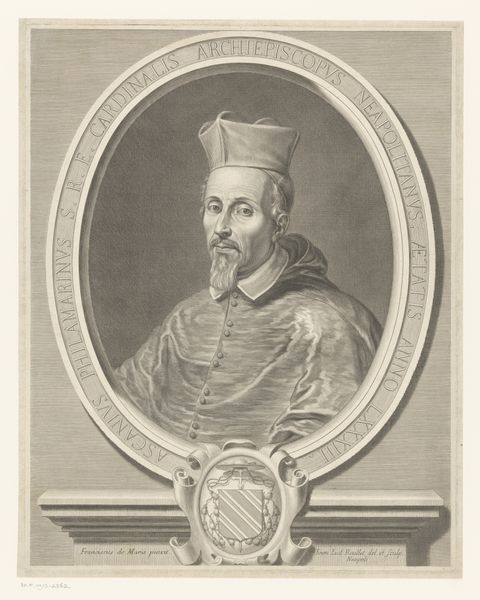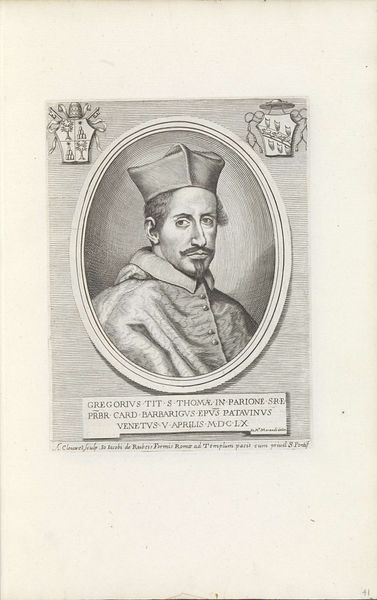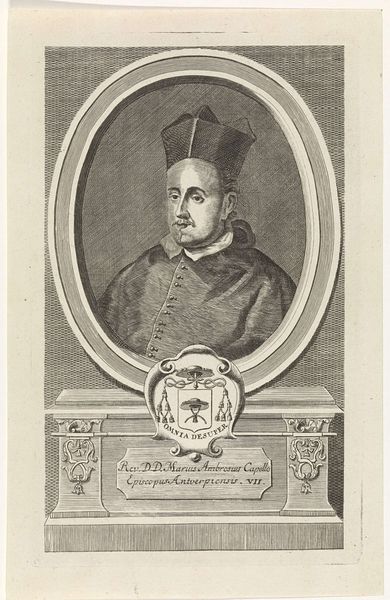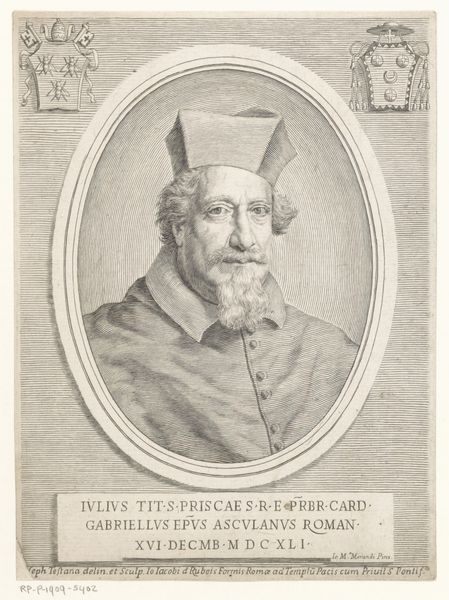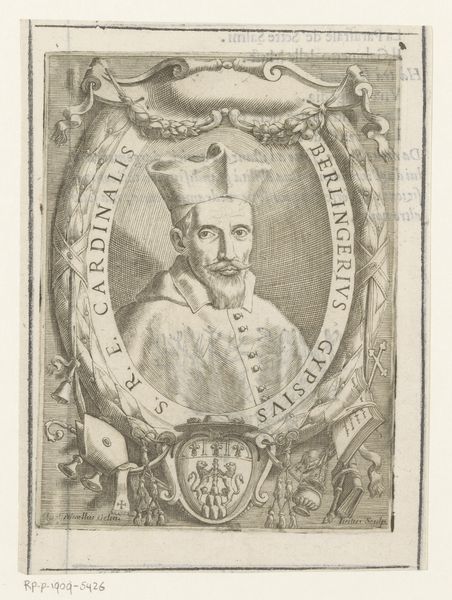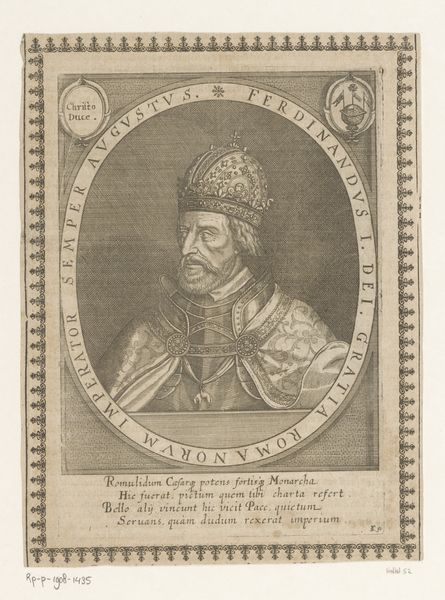
engraving
#
portrait
#
baroque
#
old engraving style
#
history-painting
#
engraving
#
calligraphy
Dimensions: height 194 mm, width 141 mm
Copyright: Rijks Museum: Open Domain
Giuseppe Maria Testana created this portrait of Cardinal Giulio Rospigliosi in 1657. The most striking symbol is the cardinal's hat, a sartorial echo of the Church's authority. Consider how this hat evolved from simpler head coverings—a sign of status in ancient societies—to this ornate declaration of ecclesiastical power. Even in ancient Greece, the Pileus hat signified the freedom of emancipated slaves. In the Christian world, the hat became a symbol of servitude to God. Note also the coat of arms in the upper corners, framing the prelate within heraldic emblems of family and allegiance. Such symbols are not merely decorative; they are keys to understanding the complex interplay of identity, power, and memory that define the sitter. The psychological weight of these symbols engages viewers on a subconscious level, evoking a deep emotional response tied to cultural memory. These symbols have resurfaced and been adapted throughout history, carrying echoes of their past.
Comments
No comments
Be the first to comment and join the conversation on the ultimate creative platform.
